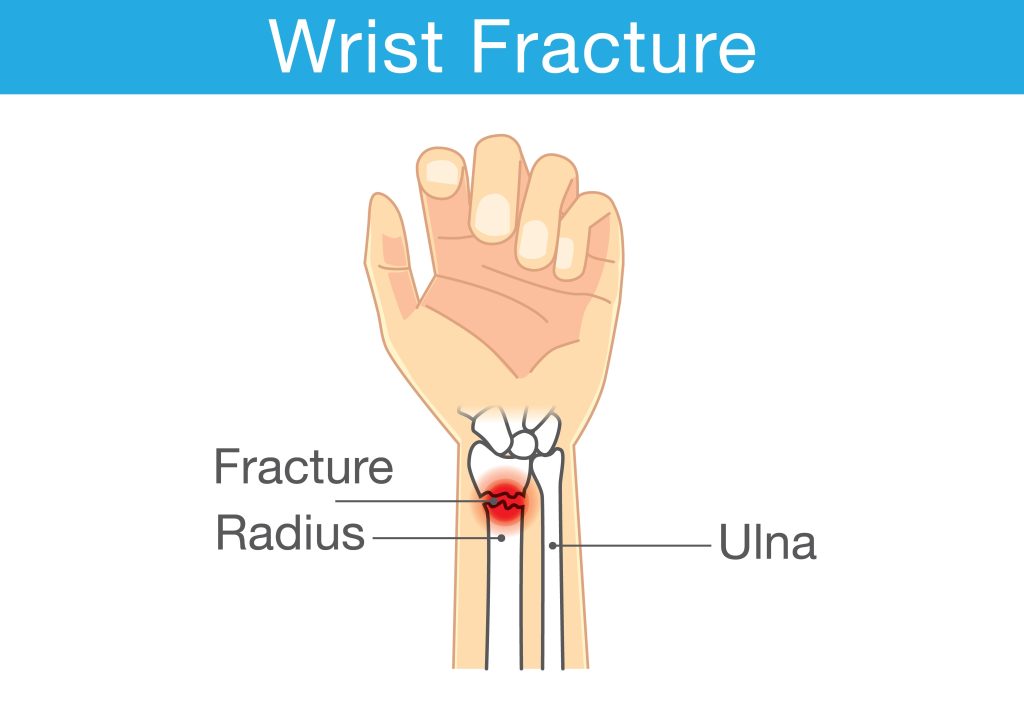Mark Kopec Now
Radius Fracture
Anatomy, Fractures, Treatments, and Potential Complications with the Baltimore Radius Fracture Lawyer
Welcome to the Kopec Law Firm’s comprehensive guide on radius fracture malpractice. This webpage includes information on the radius bone, its anatomy, types of fractures, associated treatments, and potential complications. This information is particularly relevant in the context of medical malpractice. It highlights the importance of accurate diagnosis, appropriate treatment, and potential risks involved. If you have been injured, you may need the Baltimore radius fracture lawyer.
Anatomy of the Radius Bone
The radius bone is one of the two long bones in the forearm, located on the thumb side. It extends from the elbow joint to the wrist joint and plays a crucial role in forearm rotation and stability. The bone consists of several key parts, including the head, neck, shaft, and distal end.

Types of Fractures:
Fractures of the radius bone can occur due to various causes, such as trauma, repetitive stress, or underlying medical conditions. The most common types of radius fractures include:
- Colles’ Fracture: This fracture occurs when the distal end of the radius bone breaks and displaces backward, resulting in a characteristic “dinner fork” deformity.
- Smith’s Fracture: In contrast to Colles’ fracture, Smith’s fracture involves the distal end of the radius bone displacing forward.
- Barton’s Fracture: This fracture occurs when the radius bone breaks near the wrist joint, often accompanied by dislocation of the wrist bones.
- Galeazzi Fracture: This fracture involves both a fracture of the radius bone and dislocation of the ulna bone at the wrist joint.
Seeking Medical Attention for a Radius Fracture
If you suspect you have a radius fracture, it is crucial to seek prompt medical attention for proper diagnosis and treatment. Here’s a breakdown of the doctors you should see and the tests they will likely perform:
Diagnosis
- Emergency Room (ER) Physician: If your injury is severe or you experience significant pain and swelling, the ER is the best place to go. ER physicians are trained to handle urgent medical situations and can quickly assess your condition.
- Orthopedic Surgeon: Orthopedic surgeons specialize in treating bone, joint, and muscle injuries. If your fracture is complex or requires surgery, an orthopedic surgeon will be involved in your care.
Diagnostic Tests:
- X-Ray: An X-ray is the most common diagnostic tool for radius fractures. It provides clear images of the bone, allowing the doctor to visualize the extent of the fracture.
- CT Scan: In some cases, a CT scan may be necessary to get a more detailed view of the fracture, especially if it is complex or involves other structures.
- MRI: An MRI can provide even more detailed images of the soft tissues around the fracture, which can be helpful in assessing any associated ligament or tendon damage.
Treatment Doctor
- Orthopedic Surgeon: As mentioned earlier, orthopedic surgeons are the primary providers for treating radius fractures. They will determine the appropriate treatment plan based on the severity of the fracture and your overall health.
Treatments for Radius Fractures:
The appropriate treatment for radius fractures depends on the type, severity, and individual patient factors. Common treatment options include:
- Immobilization: Non-displaced or minimally displaced fractures may be treated with casting or splinting to immobilize the bone and promote healing.
- Closed Reduction: In some cases, a healthcare professional may manually manipulate the fractured bone fragments back into alignment without the need for surgery.
- Open Reduction and Internal Fixation (ORIF): Severe fractures or those with significant displacement may require surgical intervention. ORIF involves realigning the bone fragments and securing them with screws, plates, or other fixation devices.
- External Fixation: In complex fractures or cases with soft tissue damage, external fixation may be used. This involves the use of pins or screws placed outside the body to stabilize the fracture.
Complications and Risks:
While proper diagnosis and treatment are crucial, complications can arise from medical malpractice. Potential complications include:
- Inadequate or Delayed Diagnosis: Failure to accurately diagnose a radius fracture can lead to delayed treatment, prolonged pain, and potential long-term complications.
- Improper Treatment: Inadequate or inappropriate treatment, such as incorrect fracture reduction or fixation, can result in malunion (improper healing), nonunion (failure to heal), or limited range of motion.
- Infection: Surgical procedures carry a risk of infection, which can lead to further complications if not promptly treated.
- Nerve or Blood Vessel Damage: Improper fracture reduction or surgical intervention can damage nearby nerves or blood vessels, resulting in sensory or motor deficits.
- Complex Regional Pain Syndrome (CRPS): In some cases, patients may develop CRPS, a chronic pain condition affecting the affected limb.
Types of Medical Malpractice Claims with the Baltimore Radius Fracture Lawyer
Medical malpractice can occur in various ways, and radius fractures are no exception. Here are some common types of claims related to these injuries:
- Misdiagnosis: This occurs when a healthcare provider fails to recognize a radius fracture, leading to delayed or inadequate treatment. This can result in complications such as malunion, nonunion, or chronic pain.
- Improper Treatment: This can include:
- Incorrect Reduction: A misaligned fracture can lead to poor healing and functional limitations.
- Inadequate Immobilization: Improper casting or splinting can result in delayed healing, re-injury, or malunion.
- Unnecessary Procedures: Performing unnecessary surgeries or other procedures can increase the risk of complications and infection.
- Surgical Error
- Failure to Monitor: Healthcare providers may fail to monitor a patient’s progress after a fracture, leading to missed opportunities for intervention if complications arise.
- Delayed Treatment: Delaying treatment can worsen the injury and increase the risk of complications.
Next Step: Call the Baltimore Radius Fracture Lawyer
Understanding the anatomy of the radius bone, types of fractures, appropriate treatments, and potential complications is essential in the context of medical malpractice. It’s important to note that each case is unique, and the specific circumstances will determine the type of malpractice claim that may be applicable. If you believe you or a loved one has been the victim of medical malpractice related to a radius fracture, it is essential to consult with an experienced attorney who can assess your case and provide legal advice.
Visit the free consultation page or video. Then contact the Kopec Law Firm at 800-604-0704 to speak directly with Attorney Mark Kopec. He is a top-rated Baltimore medical malpractice lawyer. The Kopec Law Firm is in Baltimore and pursues cases throughout Maryland and Washington, D.C.





